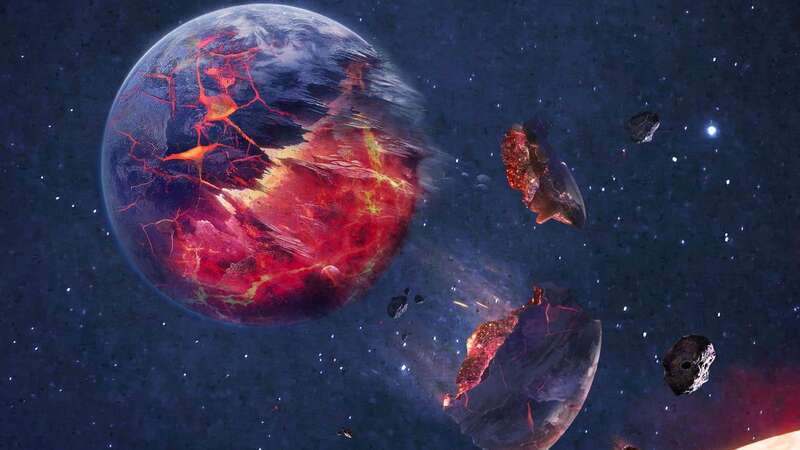

Around one in 12 twin stars show signs of 'ingesting' nearby planets, a team of international astronomers have discovered.
A global
used three huge telescopes to look at 91 pairs of twin stars and found some showed evidence of 'ingesting' planets. Scientists had presumed the twin stars would have identical compositions - but surprisingly found that around eight per cent of them differ from the others. The difference lies in one of the stars showing a tendency to 'devour' planets or planetary material in space.
The international study team was led by astronomers at the All Sky Astrophysics in 3 Dimensions (ASTRO 3D) - a $40m (£20.5m) Research Centre of Excellence funded by the Australian Research Council (ARC) and nine collaborating Australian universities. Their findings, published in the journal Nature, were based on a large dataset collected with the 6.5-metre Magellan Telescope and the European Southern Observatory's Very Large Telescope, both in Chile, as well as the 10-metre Keck Telescope in Hawaii.
ASTRO 3D Researcher Dr Fan Liu, a lead author of the study from Monash University in Australia, explained: "We looked at twin stars travelling together. They are born of the same molecular clouds and so should be identical. Thanks to this very high precision analysis, we can see chemical differences between the twins. This provides very strong evidence that one of the stars has swallowed planets or planetary material and changed its composition."
 Woman, 28, found dead in Cork flat was strangled by man she knew, Gardai believe
Woman, 28, found dead in Cork flat was strangled by man she knew, Gardai believe
The study also involved scientists from University College Cork in Ireland, Carnegie Observatories, Ohio State University, Dartmouth College in the United States, Konkoly Observatory in Hungry, and the Max Planck Institute for Astronomy, based in Germany.
Worryingly, the researchers found the frightening phenomenon appeared in around eight per cent of the 91 pairs of twin stars they looked at. All these stars were also in their prime of life - being so-called 'main sequence' stars - rather than stars in their final phases of life such as red giants, making the study all the more compelling.
 Researcher Dr Fan Liu, lead author of the study from Monash University in Australia (intouchable / OPENVERSE / SWNS)
Researcher Dr Fan Liu, lead author of the study from Monash University in Australia (intouchable / OPENVERSE / SWNS)"This is different from previous studies where late-stage stars can engulf nearby planets when the star becomes a very giant ball," Dr Liu added. Though there's some room for doubt as to whether the stars are swallowing planets whole or engulfing protoplanetary material, Dr Liu suspects both are possible.
"It's complicated," he continued. "The ingestion of the whole planet is our favoured scenario, but of course we can also not rule out that these stars have ingested a lot of material from a protoplanetary disk." It has also been predicted the study's findings will have wide-ranging implications for the study of the long-term evolution of planetary systems.
Associate Professor Yuan-Sen Ting, a co-author and an ASTRO 3D researcher from the Australian National University (ANU), said: "Astronomers used to believe that these kinds of events were not possible. But from the observations in our study, we can see that, while the occurrence is not high, it is actually possible. This opens a new window for planet evolution theorists to study."
The study forms part of a larger collaboration called the Complete Census of Co-moving Pairs of Objects (C3PO) initiative, which aims to spectroscopically observe a complete sample of all bright co-moving stars identified by the Gaia astrometric satellite.
Professor Emma Ryan-Weber, the Director of ASTRO 3D, said: "The findings presented here contribute to the big picture of a key ASTRO 3D research theme: the Chemical Evolution of the Universe. Specifically, they shed light on the distribution of chemical elements and their subsequent journey - which includes being consumed by stars."